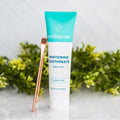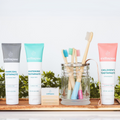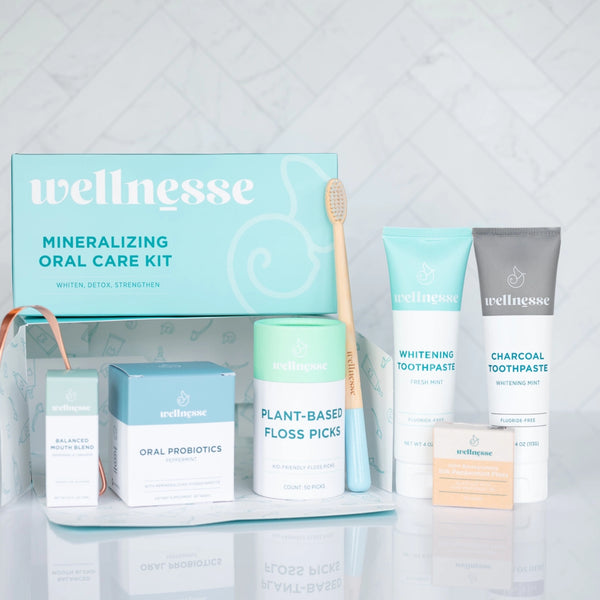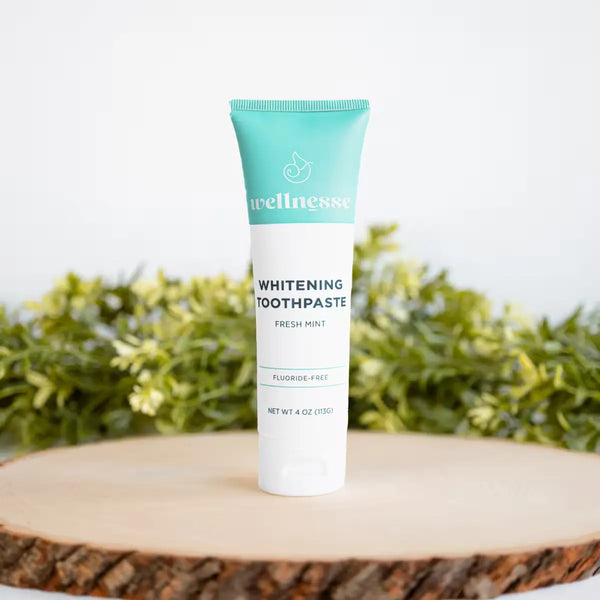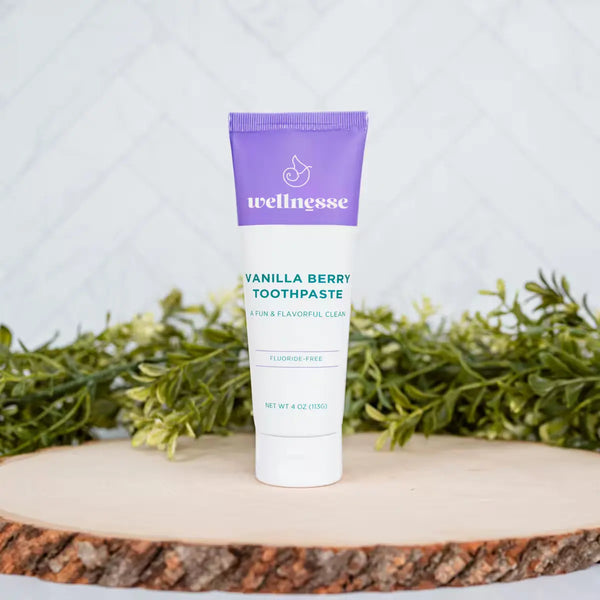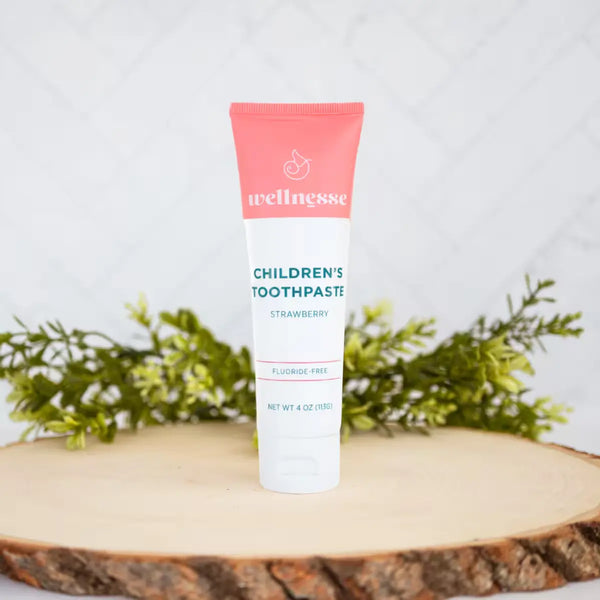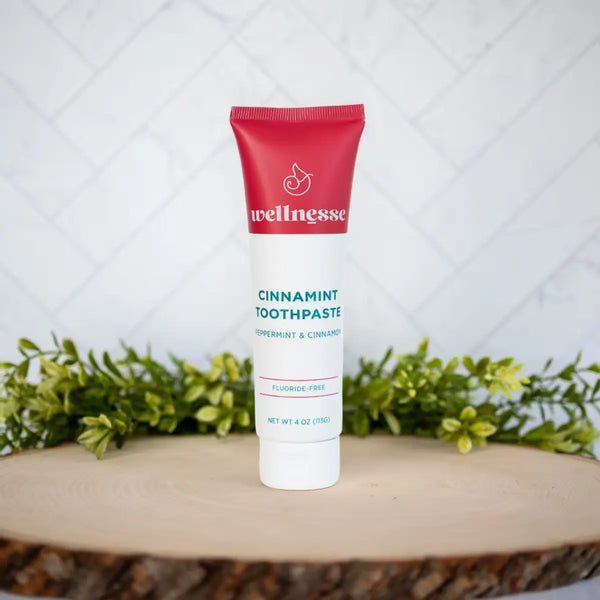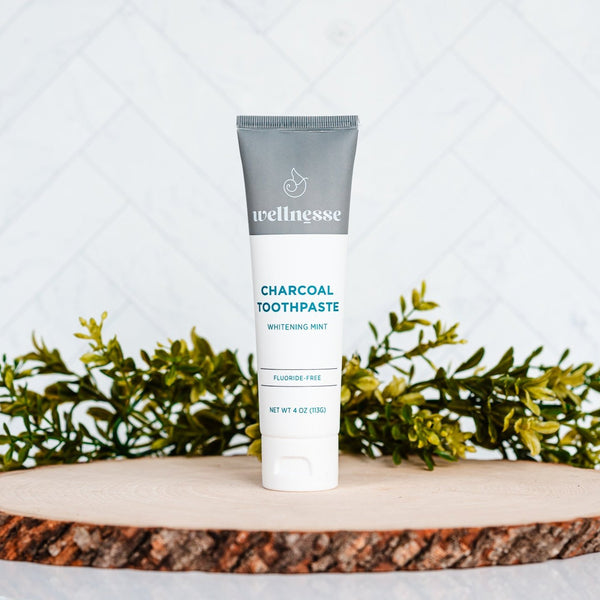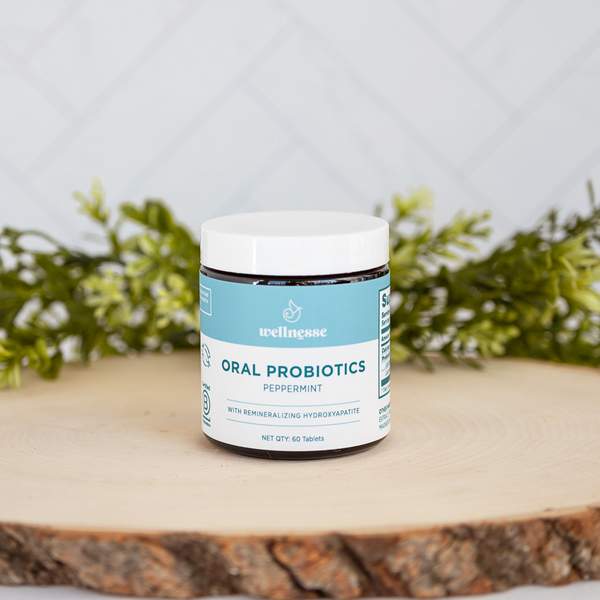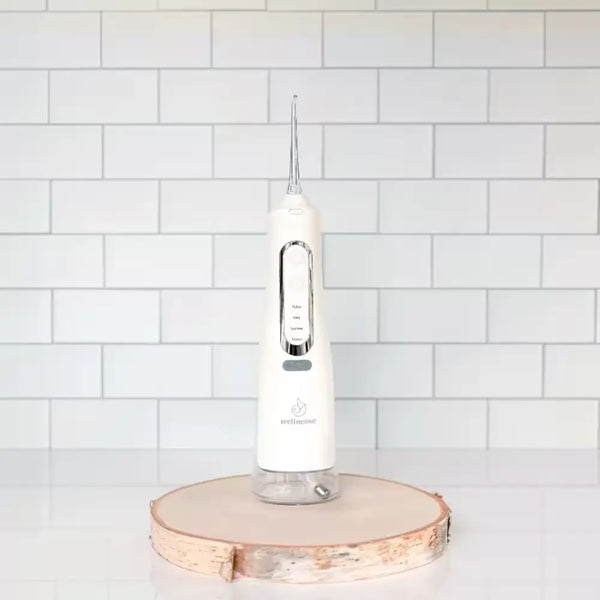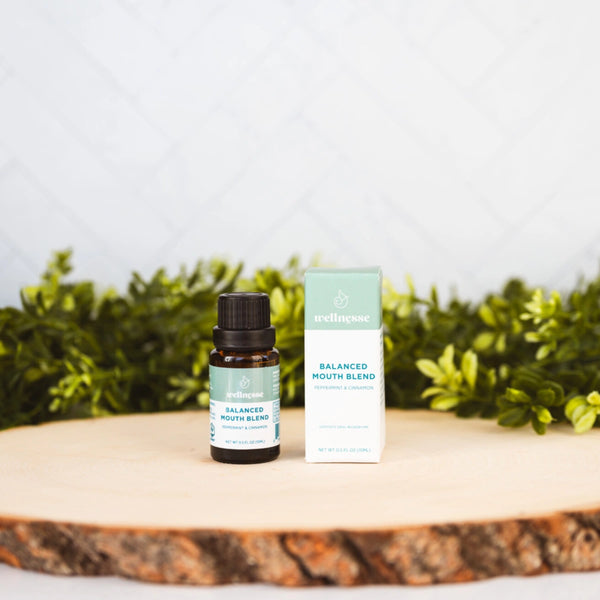When we think about oral health, most focus on our teeth (and maybe our oral microbiome). Many people don't realize that our tongues are critical components in our mouths and strong indicators of our oral and overall health. Tongue health is the most frequently overlooked aspect of oral hygiene, so we're here to educate readers on everything our tongues do for us and why they require plenty of attention and TLC.
Give your tongue the attention it deserves with our antimicrobial 100% Copper Tongue Scraper!
What’s a Tongue Anyway?
The tongue functions as both a muscle and an organ. It's the first step in the digestive process, breaking down food via enzyme-containing saliva and facilitating swallowing. More obviously, the tongue also allows people to talk and taste. The small bumps all over the tongue are papillae and taste buds, which all work together so the mouth can function regularly.
The tongue also works as a beacon, giving people a peek into what's happening inside the body and their oral health status. By understanding differences in color, coating, lumps, bumps, and cracks, people can assess their health as soon as they notice a change rather than waiting for a more drastic sign from elsewhere in the body.
Tongue Health – The Body’s Mood Ring
As fun as they can be, we all know those trendy little mood rings are only that: fun. However, tongues are an actual ‘mood ring,' allowing us to get a peek at both our oral and bodily health. The tongue is the only internal muscle we regularly see (because it isn't covered by skin), allowing us to check in with our bodies. Because of its composition, the tongue will frequently be the first sign that something is wrong in the body, and it almost always begins with color changes. That is, of course, if we're paying attention. Colors to look out for include:
- Pink: A pink tongue is a healthy tongue. There may be slight changes in the color from person to person, but the color is a relatively uniform pink with a light coating, papillae, and taste buds over the tongue's surface.
- Red: Truly red tongues are usually a sign of inflammation, either in the tongue itself or due to an illness such as scarlet fever. However, a B12 deficiency can also cause a red tongue. If your tongue looks unusually red, you may want to get your B12 levels checked, as it's not uncommon for doctors to misdiagnose the deficiency as something else, such as burning mouth disorder.
- Purple: Purple tongues often result from poor circulation due to an underlying condition or illness. In 2019, the Korea Institute of Oriental Medicine released a study that found people who suffered from COVID-19 may develop a purple tongue due to issues with microcirculation. [i] Other causes of purple tongues include Kawasaki disease and trauma to the tongue.
- Blue: Blue tongues can be scary, especially if you've never seen or heard of them. Although frequently tied to a lack of oxygen, there is also a link between blue tongues and eczema. [ii]
- Orange: Orange tongues are tied to oral thrush, poor oral hygiene, and taking certain medications, including antibiotics. Our favorite cause is too much beta-carotene - the pigment that makes carrots orange - also known as carotenemia. This harmless condition can resolve itself when someone cuts down on how many beta-carotene-rich foods they eat (make sure this is actually what’s happening!)
Coating Colors
In addition to the color of someone's tongue, they also need to look at their tongue's coating. Tongue coatings are normal in small amounts, but an excess of coating or an unusual color can mean a larger health issue is at play.
- Black: Black or dark brown coatings are usually accompanied by a ‘hairy’ appearance. This condition can be benign, but it can also be a symptom of diabetes. Other conditions tied to a black tongue include poor oral hygiene, smoking, and antibiotics. [iii] Often, a thorough tongue scraping is all that’s needed to alleviate this discoloration. Tongue scraping won’t, however, resolve the underlying cause.
- Yellow: Minor yellowing is usually a sign of bacterial overgrowth that can be alleviated simply by cleaning the tongue, but a bright yellow tongue should be examined by a professional.
- White: A white or thick coating on the tongue usually results from poor oral hygiene or sleeping with the mouth open. Another common condition is thrush, an overgrowth of yeast in the mouth. However, a white coating can also signal more serious health conditions, such as leukoplakia or mouth cancer, especially if they appear in white patches.
- Green: Like yellow discoloration, green coatings are frequently tied to poor hygiene or thrush. However, green tongues have also been linked to fungal infections.
Bumps, Cracks, and Lump
Tongues have a unique texture that helps them do their job, but sudden changes may be alarming. The most common causes of changes to tongue texture include:
- Bumps: Bumps in the tongue are usually just papillae and taste buds. They may sometimes become inflamed, resulting in a larger size, but it's often nothing to worry about unless it's accompanied by persistent pain. Someone may also develop a bump after injuring their tongue or due to allergies or illness.
- Cracks: Cracks may result from geographic tongue. According to the American Academy of Oral Medicine, a geographic tongue is “an inflammatory disorder that usually appears on the top and sides of the tongue.” [iv] The tongue can take on an appearance of patches that resemble a globe (hence the name) or may feature deep cracks. No one knows exactly what causes the disorder, but it may be a form of psoriasis. Most people won’t need to treat the condition, but people with this condition should take extra care to keep their tongues clean.
- Lumps: When people think of lumps in their mouths, their brains tend to go to oral cancer. Although that is a valid concern, especially if someone is older than 60, lumps can also result from benign growths, blocked ducts, infection, illness such as sarcoidosis, and dry mouth. Anyone who gets a lump under their tongue should have it examined by a medical professional.
How to Keep Your Tongue Healthy
Prioritizing tongue health is important for a healthy body. By watching for changes and giving it the care it needs, you can keep your tongue (and body) looking and feeling great. Here are a few of the best habits for optimal tongue health:
- Tongue Scraping: We discussed the benefits of regular tongue scraping here, but we must emphasize its importance for tongue health. In addition to brushing the tongue, regular tongue scraping reduces bad breath, reduces the chance of developing gum disease, and even improves food taste. Choosing the right tongue scraper can improve your oral wellness in spades.
- Stay Hydrated: The endless lectures on drinking enough water can get old, but it's a building block in life. Taking the time to drink plenty of water can prevent your tongue from becoming thin and dehydrated and reduce the bacteria and fungi that naturally grow in the mouth. If fitting in enough water is a chore, some people have success with drinking green and herbal teas to help them consume enough water each day.
- Eat Healthy: A proper diet helps your body function better and helps keep oral care in check. Consuming a diet with plenty of fiber can reduce the tongue's coating and prevent oral issues, like cavities, from developing.
- Brush Your Tongue: In addition to daily scraping, people should brush their tongue with their toothbrush. This can help remove or loosen stuck food particles, bacteria, and sticky tongue coating. Giving the tongue a good scrub before scraping also helps tongue scrapers work better!
- Monitor: Outside of your usual oral care products and practices, the most important thing to do for tongue health is regularly monitoring the tongue. Changes in color and texture, as well as new bumps and cracks, can signify an underlying health condition. By examining our tongues each day, we can ward off serious health conditions.
Keeping a tongue healthy is integral to good health. Although most of us weren't taught good tongue hygiene as children, taking steps to begin caring for the tongue properly as adults can help us all live healthier lives. To get the best care for your tongue, you must invest in proper oral hygiene supplies. Click here to get everything you need for a happy, healthy mouth!
Resources
[i]Lehman, J.S., Bruce, A.J. and Rogers, R.S., III (2006), Atrophic Glossitis from Vitamin B12 deficiency: A case misdiagnosed as Burning Mout Disorder, Journal of Periodontology, 77:2090-2092. https://doi.org/10.1902/jop.2006.060169
[ii] Yu, Z., Zhang, H., Fu, L., Lu, X. (2017) Objective research on tongue manifestation of patients with eczema, Technology and Healthcare: Official Journal of the European Society for Engineering and Medicine 25(S1):1-7.
https://www.researchgate.net/publication/317321668_Objective_research_on_tongue_manifestation_of_patients_with_eczema
[iii] Kalkan, G., Bas, Y., Seckin, H.Y., Karahan, S. (2014) Black hairy tongue in a 65-year-old diabetic woman, Selcuk Tip Derg, 30(13) 184-185 https://www.selcukmedj.org/uploads/publications/SUTD-500..pdf
[iv] American Academy of Oral Medicine, (2022), Geographic tongue, aaom.com https://www.aaom.com/geographic-tongue
